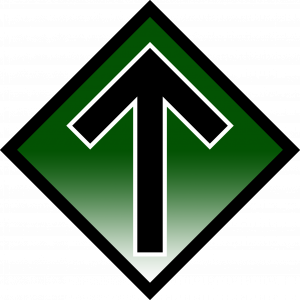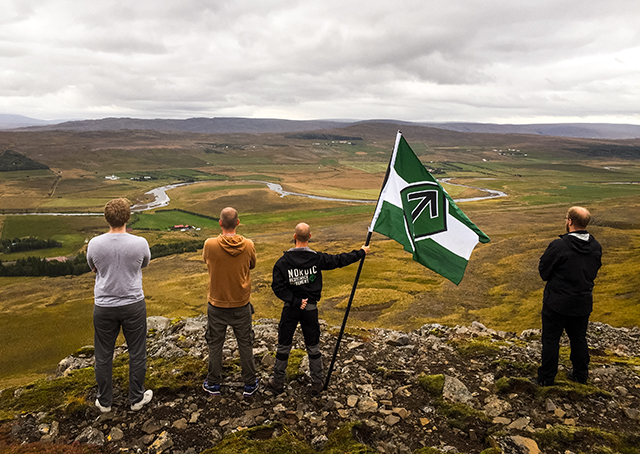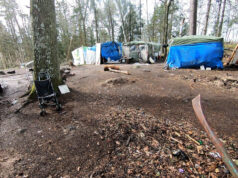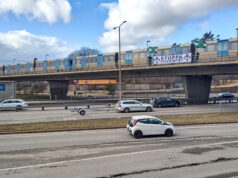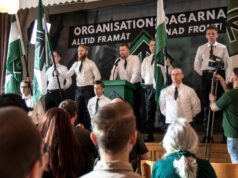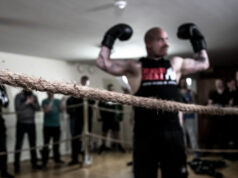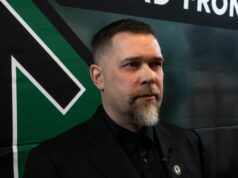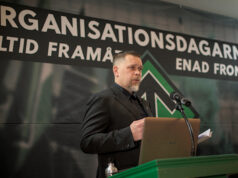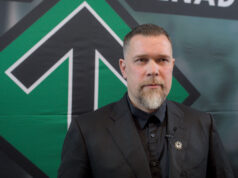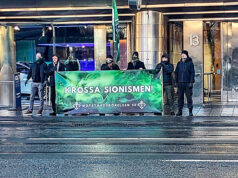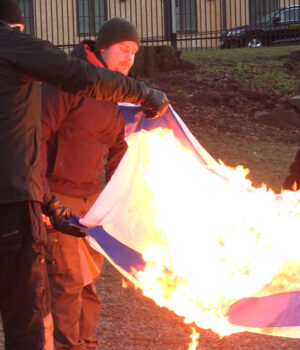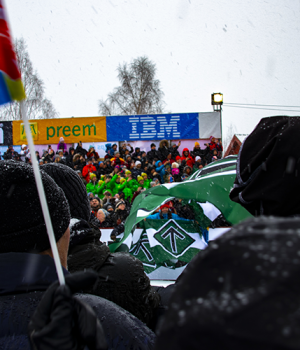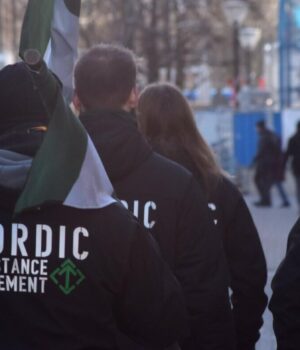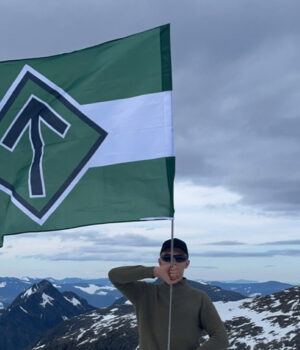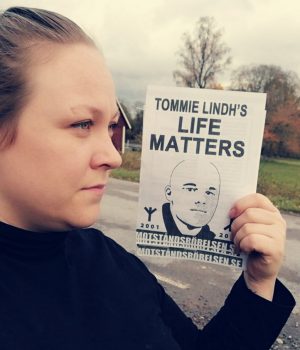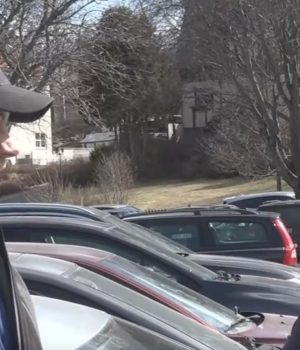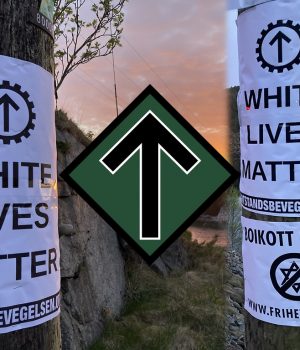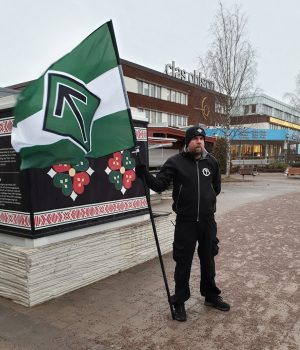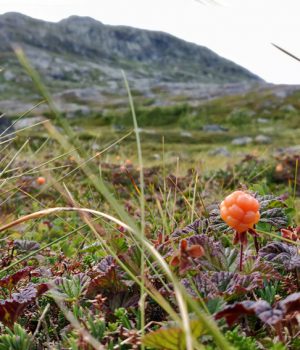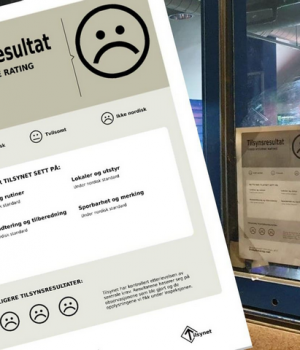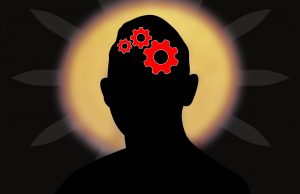TRAVEL. Last week activists from all the Nordic countries visited their kinsmen in Iceland. The following is a report detailing their trip.
The journey started on Monday September 2nd when comrades from Sweden, Norway, Denmark and Finland flew to Iceland. The activists arrived in batches at Keflavík Airport about five miles from the country’s capital.
Icelandic comrades from the organisation met the guests at the airport and took them to the location that would be used as a base during the following days. The accommodation set the standard for the journey as it was up to a very high quality, with showers, sleeping rooms, a large kitchen, groups of sofas and other comforts. The invitation mentioned living “in a cabin in the woods” so many people expected to see a wooden building with a large room where everyone would be crowded on sleeping pads. As such, the location was a very positive surprise.
Apart from cooking dinner, socializing and briefly going over the plans for the coming week, not much happened on Monday.
Tuesday: A day of tourism
On Tuesday morning everybody got up at seven o’clock, which became the standard time for the following days. After a more thorough review of the plans for the day and the activities of the days to come, it was time to depart. A very pleasant surprise also confronted us this time. Instead of riding around in cars as usual, the organisation had a complete tourist bus at its disposal – perfect for a day of exploration.
The bus tour took in some famous landmarks, such as Katla volcano, while the organizer informed the activists about the sights via the the speaker system.
One of the highlights of the day was a visit to Þingvellir, where the first Icelandic Thing was held in 930. The Thing decided laws and sentenced criminals and was held until the 1800s in front of the Law Mountain (Lögfjallið). To this day the Icelandic parliament is called the Allthing, making it the oldest parliament in the world at over a thousand years old. The Allthing was only discontinued for a short period in the 1800s, when it was abolished by the Danish king who ruled Iceland at that time.



After the visit to Þingvellir, the bus trip took us to the Haukadalur geothermal valley. There were several geysers at the site, one of which erupted multiple times during the visit. After looking around the area for a while, we stopped for lunch.

The last planned stop on the bus trip was Gullfoss, one of Iceland’s most iconic waterfalls.
The bus returned to base for a short stop where we picked up our swimwear. It was then time to depart again and this time we went to an unusual bathing spot. After ascending a mountain for a few kilometers, we arrived at a smoking thermal source that everybody swam in. After a long and relaxing bath, we walked back to the bus and returned to camp where a late dinner was served.
Before it was time to sleep, the leader of the Nordic Resistance Movement, Simon Lindberg, held a much-appreciated speech on the National Socialist worldview.
Wednesday: Base activism
Everyone got up early again on Wednesday, and this time the bus was used for transporting the activists during an extensive leafleting campaign.
The first stop was Mosfellsbær, where large numbers of leaflets were handed out. After that we went through Reykjavík and Kópavogur, where the activists diligently put up stickers at all stops.
Two municipality workers tried to claim it was forbidden to put up stickers, and a leftist woman was slightly offended at receiving a leaflet in her mailbox, but apart from that the activities went smoothly.

After the activism, everyone returned to base, where it was time for some exercise. After warming up and getting physically primed, everyone got to try something new: sword fighting. More specifically we practised with large two-handed swords and used techniques derived from medieval military instruction books.
Some of the Icelandic comrades have been engaged in this form of martial arts for a long time and their fighting resembled scenes from an historical film. For the novices it was harder to work out the technique in such a short time, but everyone at least had fun.
After having exercised, the activists had dinner. This time it was lamb, which was the most Icelandic and the most appreciated dinner during the journey.
The evening was then finished off with speeches and lectures. The first one to speak was an Icelandic comrade, who described how the Nordic Resistance Movement is a source of inspiration for white racial nationalists all over the world. After that the leader of the movement in Iceland, Ríkharður Leó Magnússon, spoke about Iceland and how the activists of the Nordic Resistance Movement are the ones continuing the struggle in the steps of their forefathers. The leader of the movement in Denmark, Martin Durvad, also rose to the podium and said a few words before handing over a gift to the Icelandic comrades. In closing, Marcus Hansson lectured on debating techniques, and Markus Nordh spoke on the struggle in the streets with tips from the Activists’ Handbook.
The podcast Mer än ord (More Than Words) was also recorded in Iceland on Wednesday night.
Thursday: An historical day
History was written on Thursday when the Nordic Resistance Movement conducted its first public leafletting activity in Iceland.

Around 20 activists went to Reykjavík and started leafletting at Lækjartorg square, discussing with locals and putting up stickers.
Since the Nordic Resistance Movement is a new phenomenon in Iceland, the response was often surprise or curiosity, but there were also Icelanders who understood and sympathised with the organisation’s struggle.
After a while, agents in civilian clothes arrived and made contact with the activists. Despite a constructive dialogue in which we explained that the activists of the Nordic Resistance Movement were just going to put out a political message and did not intend to start any trouble, regular police officers showed up directly after finishing the conversation with the agents.

When the police arrived, a large number of journalists began showing up to take pictures and film us. Afterwards, newspapers and Icelandic TV reported on the activity.

The activity was finished after an hour and a half when it was time for lunch. Then the activists continued on to Akranes where they split up into two groups. One group set up outside a shopping center and the other handed out leaflets to households and put up stickers. At the shopping center an older woman wanted to donate money to the Movement.
Thursday was finished by going to a new location where dinner was served, and after that we socialized until everyone fell asleep, tired and satisfied with yet another intense day.
Friday: Attractions and relaxation
Having dedicated two days to struggle, the final day in Iceland was devoted to exploration and relaxation.
The first stop for the day was at the Deildartunguhver hot spring. Then we visited Reykholt and the tourist center dedicated to Snorre Sturlasson, who lived in the village during the Middle Ages. Many of us bought books and jewelry here.
The next stop was a lava field where the lava has carved several magnificent caves out of the ground. The largest cave system is known as Surtshellir (The Cave of Surtur). Surtur/Surtr/Surt is a mighty fire giant in Norse mythology.

Due to cloudy weather that would have compromised our view, the organizer decided to cancel the plans to climb a mountain in the area. Instead everyone went to a hot bath and spent a couple of relaxing hours in the water before returning to the new location.
Those who still wanted a physical challenge took the time to climb a small mountain situated behind the location.
Afterwards dinner was served, and as a closing note two Icelandic comrades were appointed as activists by Simon Lindberg.
Saturday: Journey home
All the foreign guests returned home from Iceland on Saturday. Some got up early to have time for some nocturnal activism before their plane departed in the early morning. Others travelled around later in the day and had time for some exploration inside Reykjavík.
In conclusion this was a pleasant week of struggle and fellowship from the perspective of the participants. From the perspective of the struggle, this was the starting point for the next phase of establishing the Nordic Resistance Movement in Iceland.

